After visiting the spectacular “Oddiyana lake” (Lake Rawa Pening), I did some more online research on Guru Padmasambhava in Indonesia, and stumbled across a Padmsambhava stupa project website that had been commissioned by/for Chatral Rinpoche, whom I have long admired as not only a great yogi Buddhist master (he is the principal lineage holder of the terma cycle teachings of Sera Khandro and Longchen Nyingtig), but also one of the most passionate and uncompromising advocates of vegetarianism/not eating slaughtered animals in 20th Century Tibetan Buddhism. He also engaged in many saving lives of animals activities and was devoted to the 16th and 17th Karmapas, and composed a long-life prayer for the 17th Karmapa, Ogyen Trinley Dorje (see below) [1].
Here is a video of Lama Tharchin Rinpoche speaking about an amazingly prophetic handwritten letter that Chatral Rinpoche received from the 16th Karmapa telling him to go to Rumtek on a certain date (the handwriting was by 16th Karmapa’s assistant, and the signature was 16th Karmapa).
Like a genuine Vajrayana master, Chatral Sangye Dorje was very selective when it came to his students, and had only a handful of students, despite being famed for his Dharma activities all around the world.
I also share some photos of HE 12th Tai Situ Rinpoche’s Dharma Graha Padmasambhava centre, near the Borobodur temple, which I briefly visited that contains a stunning statue of Guru Padmasambhava, as well as a photo of Chatral Rinpoche, and a Kālacakra thangka, in the main shrine room.
Dedicated to the memory and activities of the great Chatral Rinpoche, may the stupa be completed and may we all follow his wise advice on abandoning eating murdered animals, even for so-called ‘health reasons’!
Music? Guru Padmasambhava mantra and Meat is Murder by the Smiths.
Written and compiled by Adele Tomlin, 19th May 2024.
Chatral Rinpoche’s planned Padmasambhava Stupa, near Borobudur


On the website for the Padmasambhava Stupa it says:
“Stupa Padmasambhava is located in the vicinity of three famous ancient 8th Century Buddhist stupas: Candi Borobudur (2.25 km to the southeast), Candi Mendut (1.85 km to the southwest), and Candi Pawon (1 km to the Southeast). The location of Stupa Padmasambhava, Candi Mendut, and Candi Pawon together makes a near perfect triangle shape, seen from map.
The stupa is located at the auspicious land where the two rivers , Praga River and Elo River meet. The Praga river is regarded as a sacred river for the Buddhist in Indonesia, as it crosses the vicinity of Candi Borobudur, Candi Mendut, and Candi Pawon. The source of Praga river is called ‘Umbul Jumprit’, where the water is very clear, and Its water is used as holy purification ritual during the annual Vesak celebration at Candi Borobudur. The Elo river is also called Wati River by the local (Wati means female for the local language which originated from sanskrit word “Vati”). The beauty of the nature manifests itself as a sacred mandala, and emanating its outer, inner, and secret spiritual blessings for the practitioners and common people like us to benefit from.
On inner level, the peaceful stream of Praga River symbolizes the compassion principle, and the active stream of Elo River symbolises the wisdom principle. The meeting of the two rivers symbolizes the union of compassion and wisdom which are the main principles of Buddhist practices. The union of compassion and wisdom with Boddhicitta and skillful methods are the essences of Vajrayana Buddhism.
On outer level, the geographical of the land location represents our cosmology and its principal energy, as what Candi Borobudur depicts on its wall carvings (reliefs) and raising layers to represent the Buddhist Cosmology with the Dhammadhatu at the highest level.
The stupa will stand 68 feet high (21 meter) symbolizing the 21 Taras. The shape of the stupa will closely resemble to the Boudhanath stupa. It was through the blessings and spiritual guidances of H.H. Chatral Sangye Dorje Rinpoche and with the blessings of The Three Jewels, Drimed Namdag, one of the rinpoche heart disciples, received numerous auspicious dreams and visions of the land location. He is destined to build The Holy Stupa Padmasambhava on the destined auspicious land location or mandala. “
I wondered if those dreams by such a great devotee of Padmasambhava such as Chatral Rinpoche, he intuited (or even knew) that Borobudur and Java was in fact Oddiyana too.
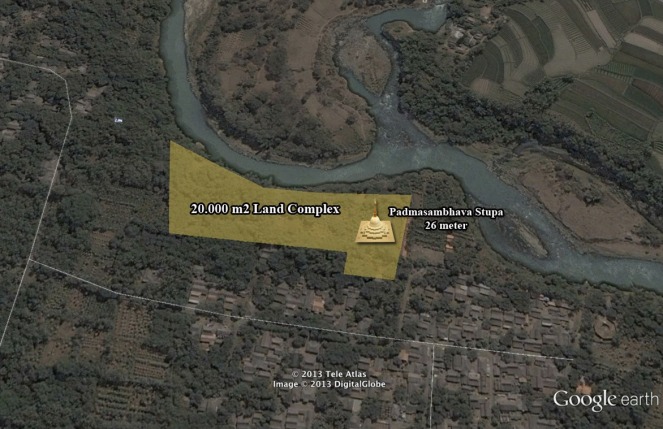
The Relics of Chatral Rinpoche and Shakyamuni Buddha
The website also posted (in 2016) that:
“Before H.H. Chatral Rinpoche parinibbana, Rinpoche offered the 12 Holy Relics that will be put into the stupa. Among the 12 Holy Relics is the Holy Bone Relic of Shakyamuni Buddha.”
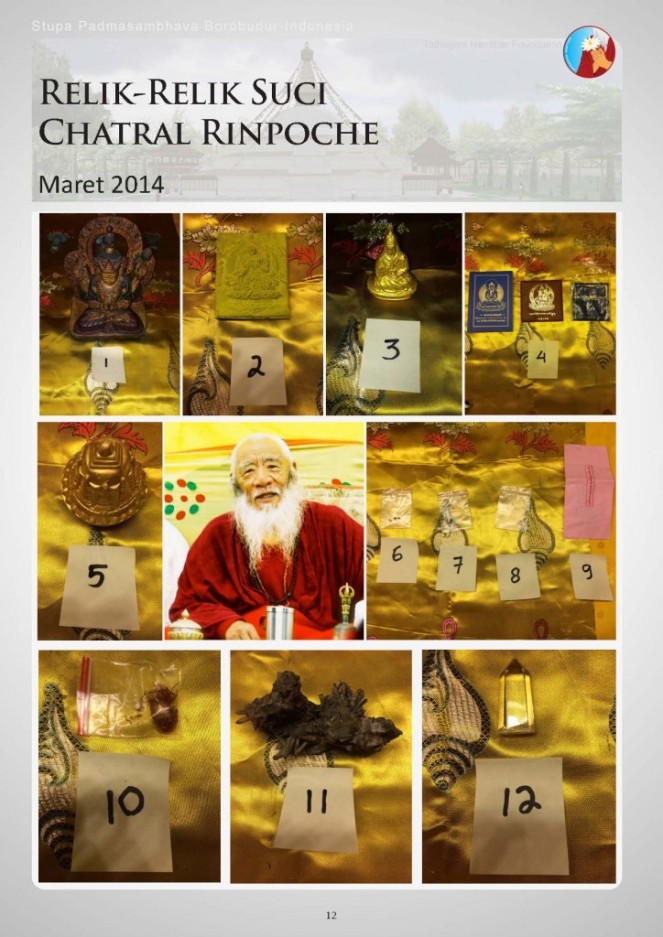
There are also some photos posted in 2014/15 of preparations being made for the stupa including making tsa-tsas. In 2018, some photos were posted of the stupa’s crown arrival having been made and shipped from Nepal:


Then bizarrely, on Vesak Day 2018, the website posted something for ‘vaginal dryness’ and female viagra pills! I suspect the website may have been hacked into. This was around the same time as Kalacakra empowerment took place in Borobudur The final post was some photos on Vesak Day 2019.
However, since then there was no website update, and I wonder what happened with it. Perhaps the COVID lockdown had interfered with plans. Update: since writing this, I have been informed of potential reasons including the murder conviction of the Indonesian tulku, Fery Surya Perkasa recognised by Chatral Rinpoche in 2007. However, it seems more likely to have been COVID, see endnote [2] below.
Finding the Stupa ground: An adventure of three females
I had not realised that Chatral Rinpoche had decided to construct such a stupa at the place in Java, near Borobudur, where the ‘two rivers meet’. However, as soon as I read about it I decided to try and find it. Especially as I had just published a long-life prayer on social media written for the 17th Karmapa by Chatral Rinpoche. It seemed like a very auspicious coincidence. Still sick from flu and cough, I asked a young Indonesian woman to come with me, who kindly offered her car and driver for the trip for free, and brought along her 10 year old niece. It made the trip much easier and safer.
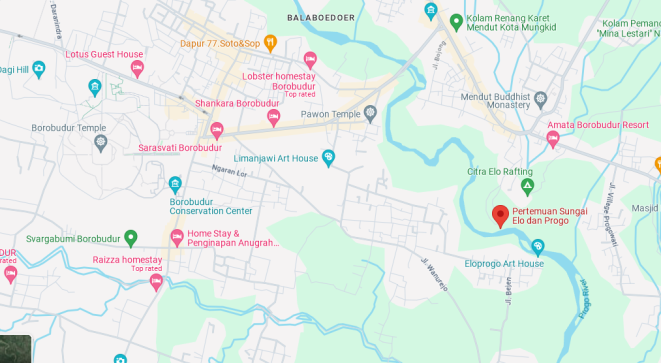
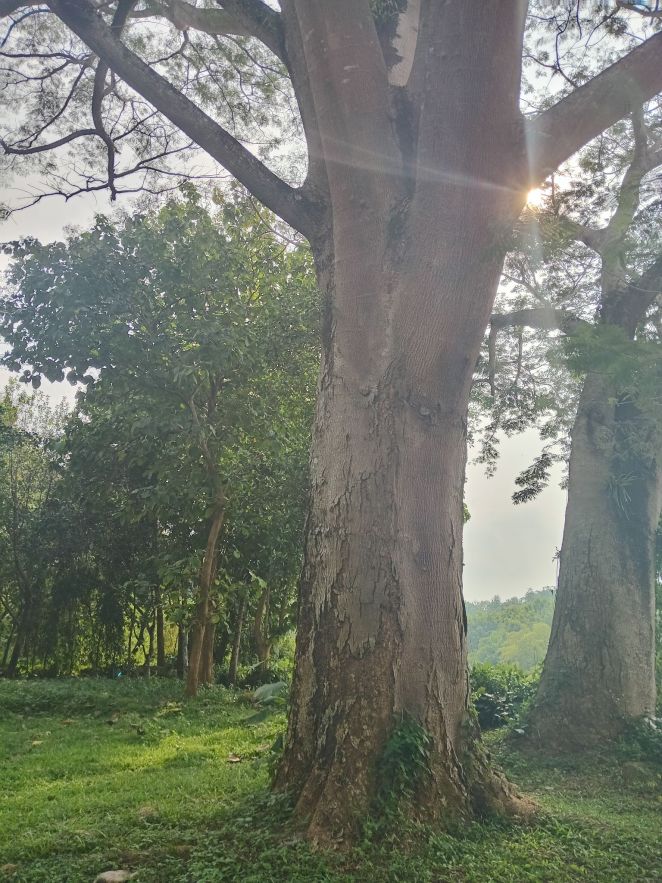




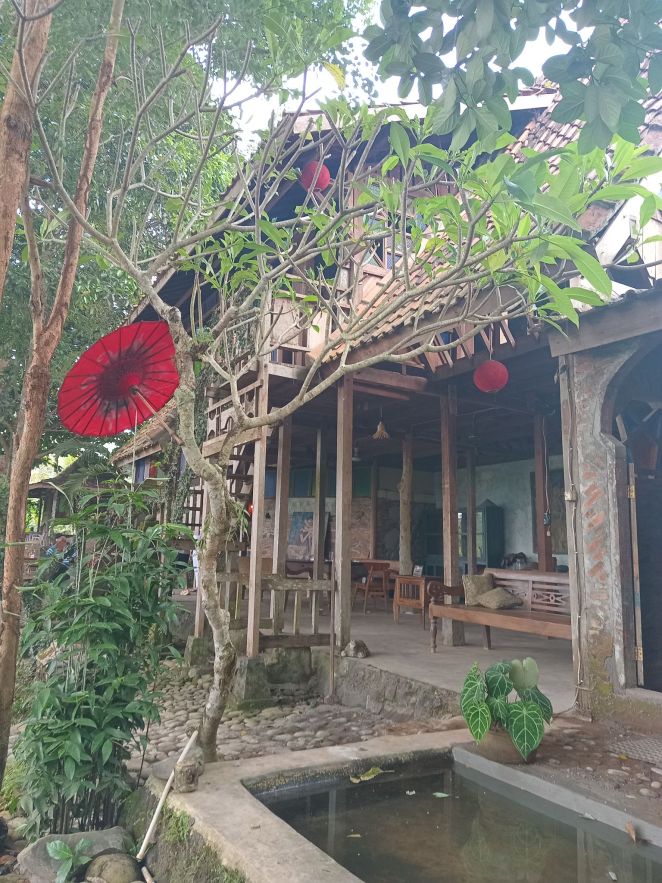
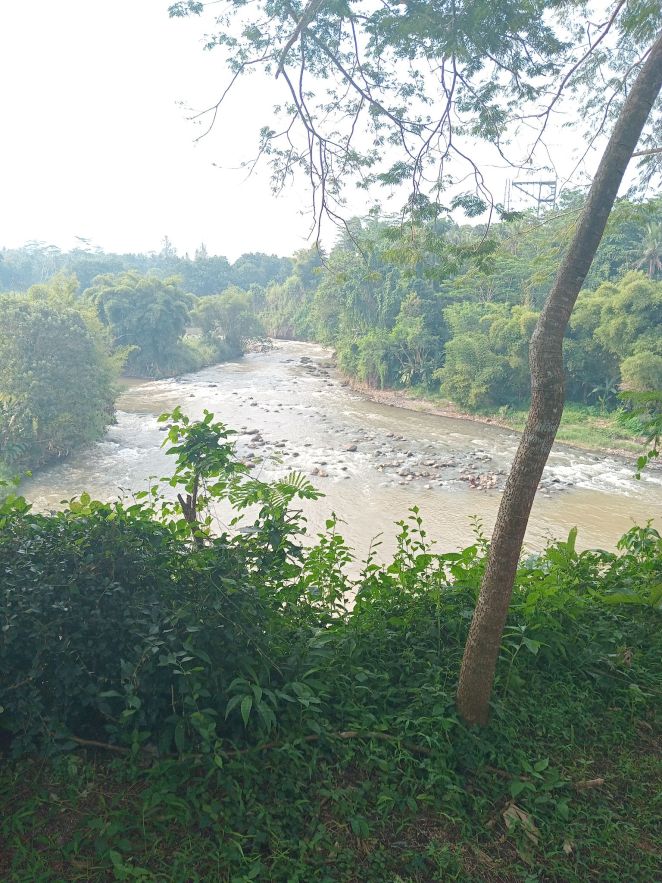

Although the cafe was a lovely place to chill out and have a refreshing drink from the intense, sweltering heat of the day, the stupa was nowhere to be found. I refused to give up, and spurred on by the young girl’s enthusiasm for ‘adventure’ I asked the driver to drive to the river bank itself, where the satellite map suggested there was something stupa-looking there. The road led to a ‘dead-end’ dirt path, so we had to get out of the car, and walk the remaining distance to that point where the rivers meet.
At that point, I sighed with a smile of joy and relief as we was a small stone statue of Atisha, and a cleared stone ground with geometrical proportions drawn onto it. Tony had told us that the stupa had not yet been finished, but the plans were there (and this seemed to be true). The young girl with us yelped with delight, and so did I! I took photos of the location, which was lovely indeed, and stood in the middle of the stupa ground chanting the Guru Padmasambhava mantra. As I did so, again I felt uncontrollable weeping and heart chakra opening and it was as if something had been opened there/unblocked. I have no idea what has happened with the stupa project, or even if this was the one planned by Chatral Rinpoche, but it felt like a special (and secret) place indeed. Hidden and unknown yet one which had been visited by a great meditator/master. In any case, three generations of females together had found it and we were overjoyed to be there, as if the dakinis were laughing too.
I wondered what had happened to the building of the stupa and why it was still not finished. Hope that by raising awareness of it here, it will help with its completion!

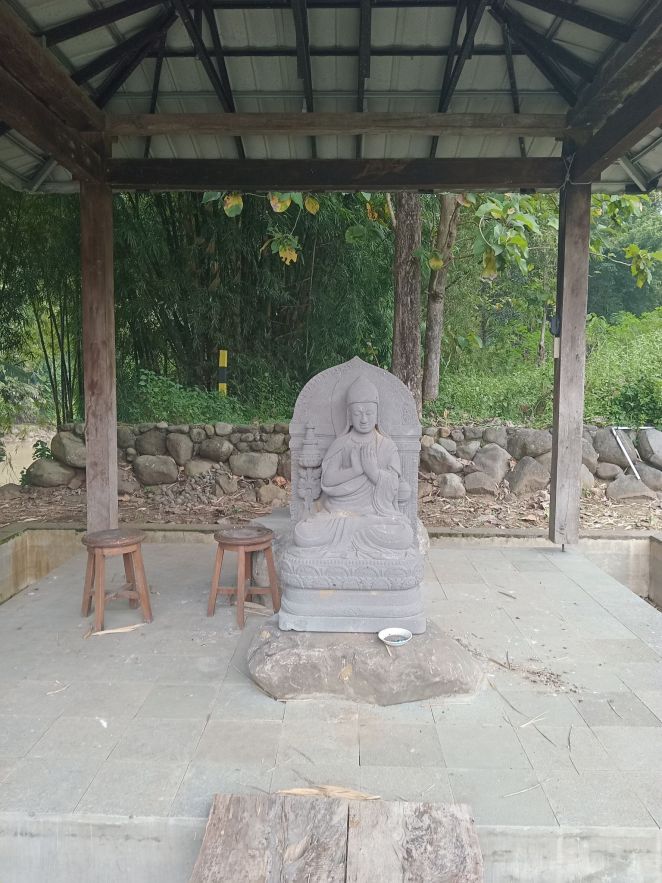



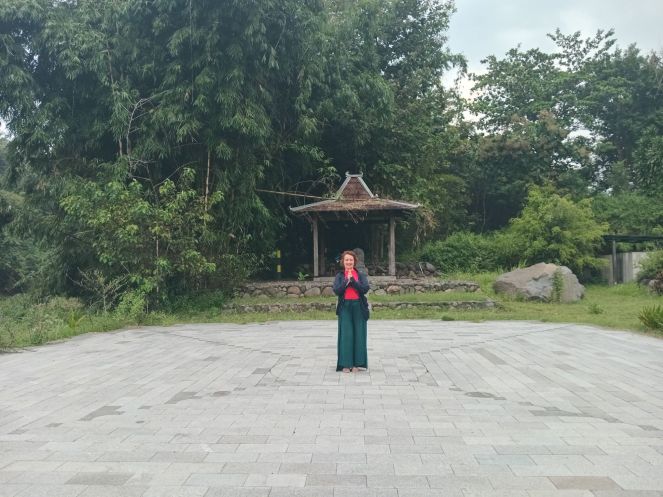

Yuthog Ling Jakarta: Newly Built Statue of Chatral Rinpoche
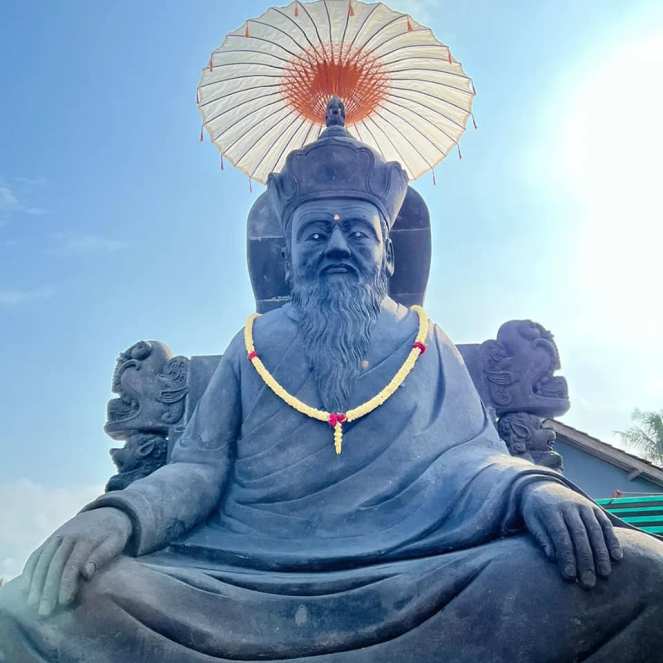
Graha Padmasambhava Centre: 12th Tai Situ Rinpoche and Palpung
Not far from the Borobudur main temple is another Dharma centre dedicated to Guru Padmsambhava, this one founded by HE 12th Tai Situ Rinpoche, who recently gave teachings there this year. Before I left Borobudur area, I was kindly taken to visit it by the same people.
It was a lovely, new place with big temple room and guesthouse rooms for participants in retreats there. I was told this was where the monastics had stayed during the Indonesian Kagyu Monlam led by 12th Gyaltsab Rinpoche.
In the shrine room were various thangkas of great Tibetan Buddhist masters, including Chatral Rinpoche, and a huge statue of Guru Padmasambhava. I was unable to speak to the lama there because my throat and cough were still hoarse and inaudible. Here are some photos I took below:
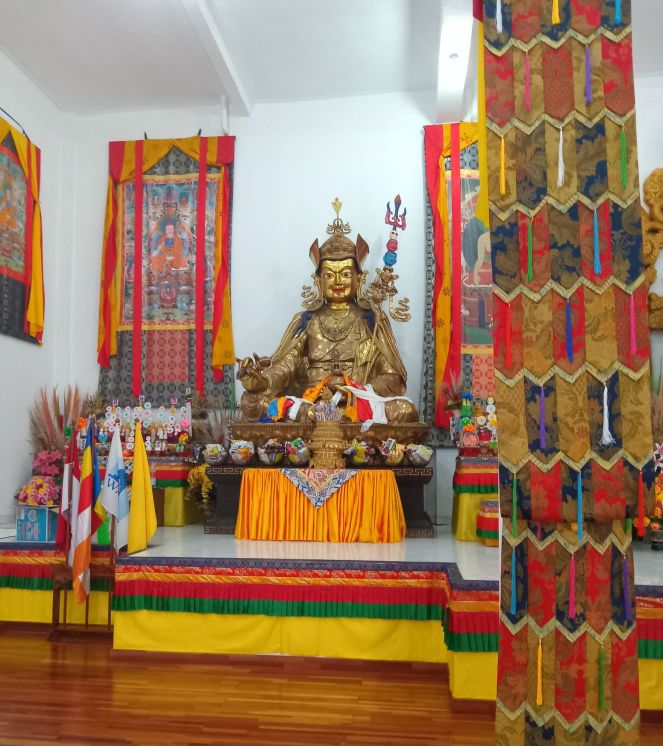



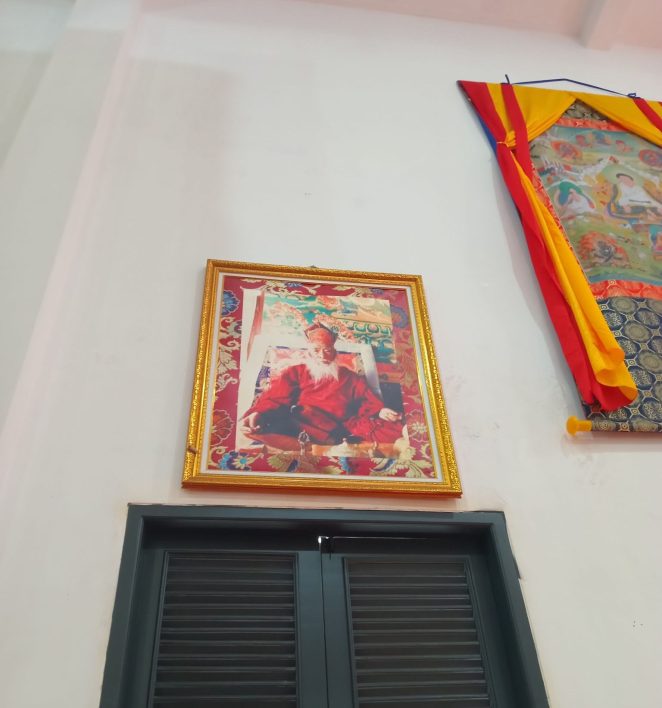
3rd Jamgon Kongtrul’s 1988 trip to Borobudur, Indonesia
Since publishing the Borobudur, Java articles, I also discovered that in August 1988, Jamgon Kongtrul 3rd (who was tragically killed in a car ‘accident’ in 1993 not long after) visited the region. Here is a stunning video of Jamgon Kongtrul’s trip there.

Long-Life Prayer for 17th Karmapa, Ogyen Trinley Dorje composed by Chatral Rinpoche

Endnotes
[1] As a ngagpa, Chatral Rinpoche spent most of his time wandering ceaselessly and meditating in deep mountain caves. In 1937, the fifth Reting Rinpoche and the regent of 14th Dalai Lama, Jamphel Yeshe Gyaltsen requested Khenpo Ngawang Pelzang to come to Lhasa to give Dzogchen transmissions. Owing to his old age, Khenpo Ngawang instead recommended Reting Rinpoche to look for Chatral Rinpoche.
Reting Rinpoche sent messengers with a letter from Khenpo Ngawang to find Chatral Rinpoche. They found him meditating in a dense forest of Southern Tibet. Though reluctant at first, Chatral Sangye Dorje agreed to go to Lhasa on seeing a letter from his root guru. Chatral Sangye Dorje stayed with Reting Rinpoche for two years, giving him many transmissions and instructions – the ear-whispered and profound heart essence of the Dzogchen teachings. Another example of Gelugpa insistence on taking the lineages and practices from others it seems!
[2] UPDATE: Since writing this article, an Indonesian told me that a possible reason it had not been finished was because the Indonesian tulku Ferry Surya Perkasa (Tulku Yongdzin) whom Chatral Rinpoche had recognised, had been involved in a drugs overdose case with a female Indonesian singer called Alda Risma, who died and he was jailed for murder afterwards. The Indonesian told me that most Indonesians believed he killed the singer, here is an English language news story about the case. In that story it states that: “August 9th 2007. Ferry was found guilty of premeditated murder and sentenced to 15 years prison. The prosecution had requested 14 years, for unpremeditated murder.” I was informed that he has now been freed from jail and will be leading the Nyingma Indonesian monlam later this month. However, the website were posting updates about the stupa from 2014-19, so it seems more likely that it was due to the COVID lockdown and lack of funding/support as a result of that.

